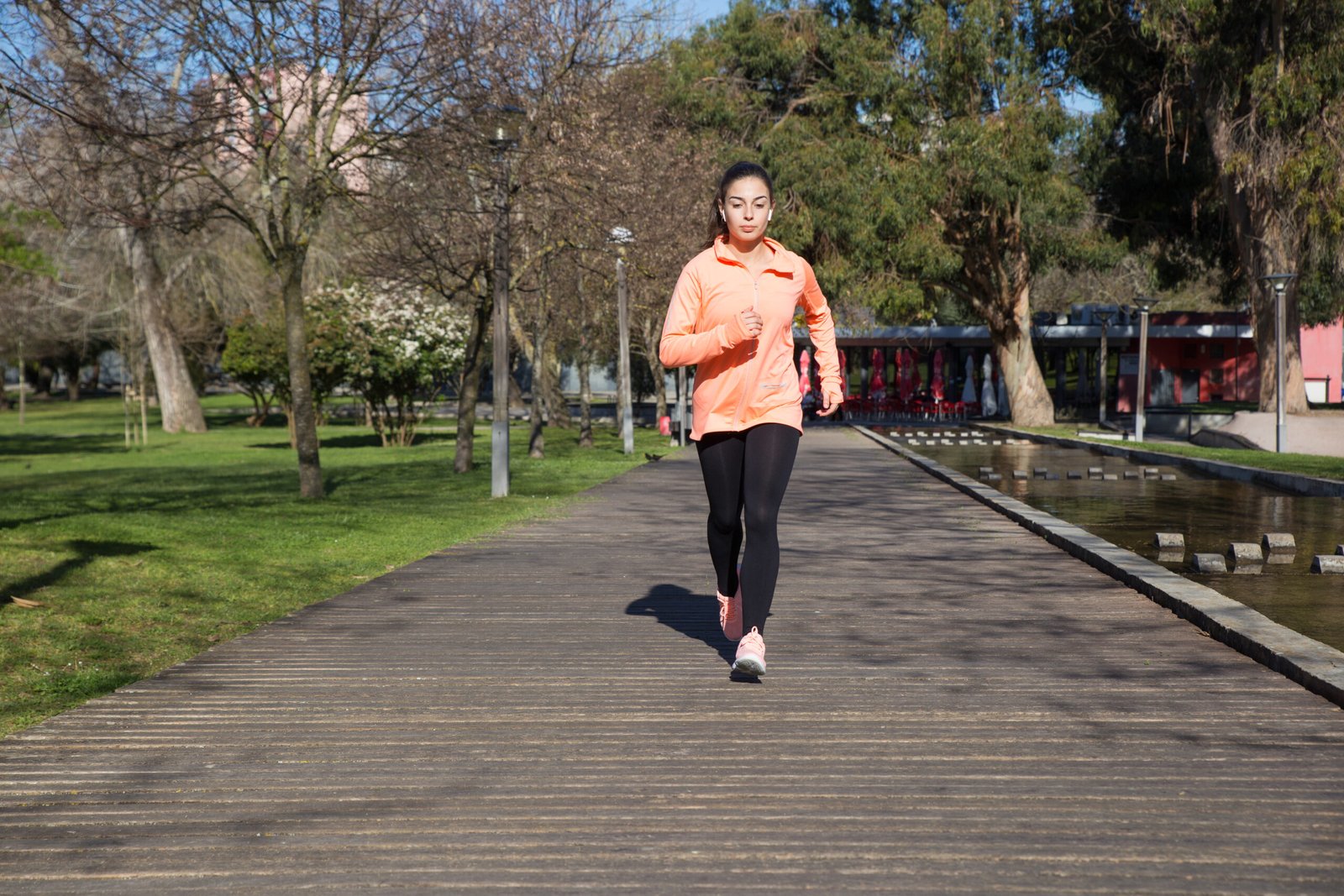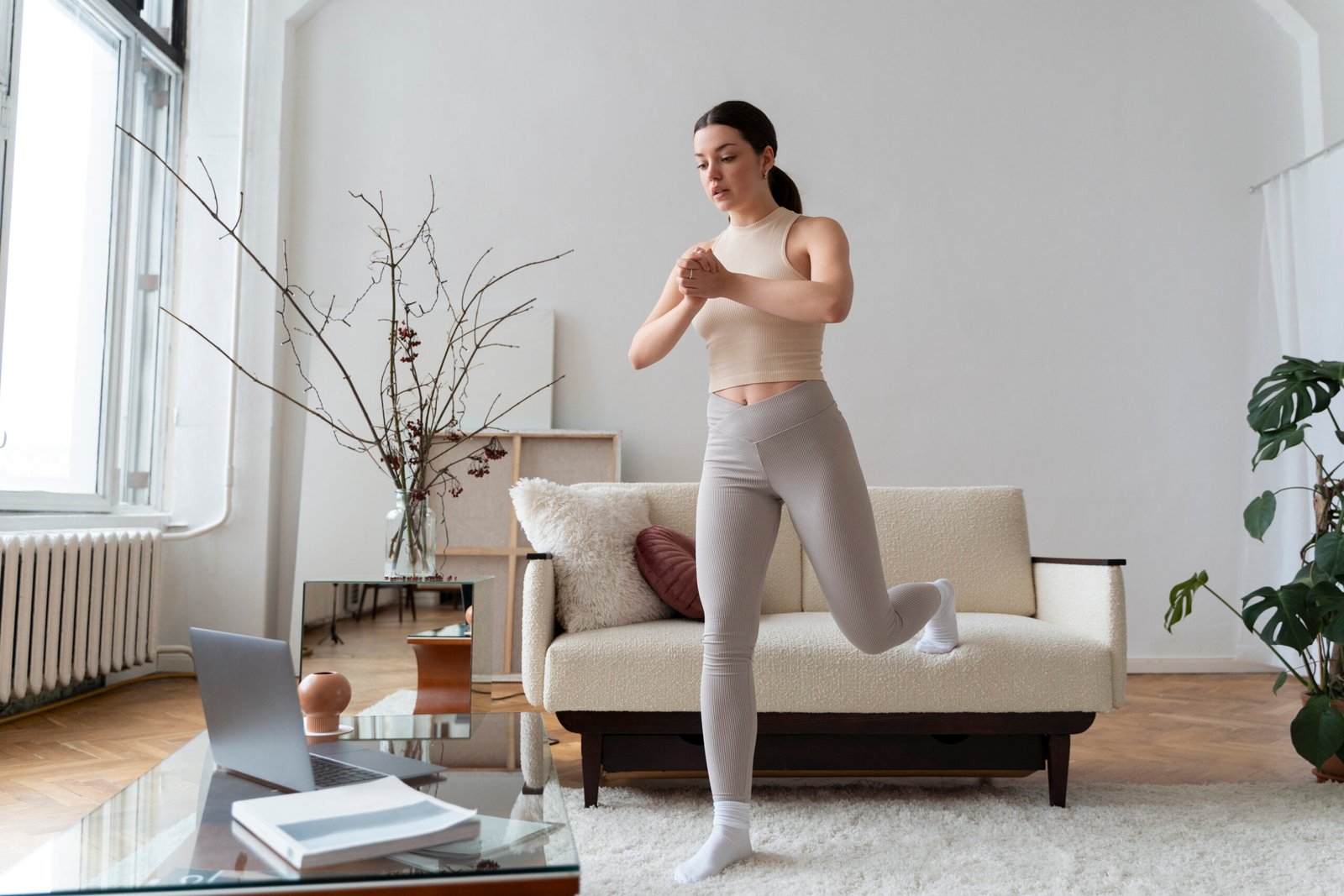This blog post about” The 20 Best Cardio Exercises to do at Home”
People do not need a lot of equipment for cardiovascular exercise. There are various cardio workouts a person can do at home with no or minimal equipment, such as marching or jogging in place, dancing to music, mountain climbers, and burpees.
The American College of Sports Medicine recommend people engage in 150–300 minutes of moderate physical activity a week.
The following exercises allow a person to perform cardio almost anywhere, such as in their home, public park, or outdoor space.
People can choose the exercises that suit their current fitness level. They could also move on to more difficult movements over time as their fitness improves.
Best Cardio Exercises to Do at Home
You don’t need a gym membership or fancy equipment to get your heart pumping. With just a bit of space and motivation, you can turn your living room into a cardio zone. The following calorie-burning exercises are ideal for anyone looking to get in shape from home, regardless of experience level. They can be used in standalone workouts or combined into a circuit.
A simple structure could be performing each move for 45–60 seconds, resting for 30 seconds, then moving on to the next. Once you build endurance, try completing several rounds (circuits) with minimal rest in between for a more intense session.
Beginner Exercises
Marching in Place

Marching in place is a great way to gently raise your heart rate while warming up your muscles. This simple move mimics the motion of walking without needing any space. It’s perfect for beginners and older adults looking for a safe introduction to cardio.
To make it more challenging, increase your pace or lift your knees higher toward your chest. Adding arm movements or light hand weights can also increase calorie burn. This low-impact move is ideal for easing into a new fitness routine or recovering from injury.
Single Leg Stand

Balancing on one leg is more than just a test of stability it also works your core and activates deep abdominal muscles. It’s a great way to improve coordination and build a foundation for more complex movements.
As your balance improves, try holding the position longer or lifting your leg higher. To add a cardio element, switch legs more rapidly or include small hops between stands. This makes it both a strength and endurance exercise, ideal for full-body engagement.
Dancing to Music

Dancing is not only fun it’s also an excellent cardio workout. Moving to music naturally elevates the heart rate, burns calories, and releases endorphins that boost your mood. It’s a fantastic choice for people who enjoy expressive movement.
Whether you freestyle or follow an online routine, dancing can be as intense or relaxed as you like. You’ll be working your entire body—arms, legs, and core while developing rhythm and coordination. Plus, you’re more likely to stick with it if it doesn’t feel like a workout.
Arm Circles

Arm circles may seem simple, but they effectively warm up the shoulders and arms while gently raising the heart rate. They’re a great way to prep for upper body movements or to include in low-impact cardio routines.
Perform small, controlled circles forward and backward, gradually increasing size and speed. For added challenge, hold light dumbbells or water bottles. This move is ideal for individuals with limited space or mobility, as it can even be done seated.
Supine Snow Angels (Wipers)

This floor-based move targets the shoulders, chest, and core. By performing snow-angel-like movements while lying on your back, you activate postural muscles and stabilize the spine.
It’s excellent for those needing a low-impact option that still works major muscle groups. Moving slowly and with control ensures deep muscle engagement, especially in the abs and obliques. Use a mat or soft surface for comfort.
Trunk Rotation

Twisting at the torso not only strengthens the core muscles but also adds a dynamic range of motion to your workout. It’s a functional movement that mimics daily activities and supports spinal mobility.
To increase cardio intensity, perform the movement faster or add a weight like a water bottle or medicine ball. Whether standing or seated, trunk rotations are excellent for engaging the obliques and improving overall flexibility.
Air Squats

Air squats are a powerhouse move that works the glutes, thighs, and core. They mimic the natural sitting motion, improving mobility and lower-body strength. With no equipment needed, they’re perfect for beginners.
Squats also boost the heart rate when performed in rapid succession, making them a valuable addition to a cardio routine. Just ensure proper form keep heels grounded and knees in line with toes to avoid injury.
Intermediate Exercises
Jogging in Place

Jogging in place is a natural step up from marching. It ramps up heart rate while engaging the calves, quads, and glutes. Plus, it’s easy to do in a confined space, making it a go-to option for indoor workouts.
To intensify the workout, increase your speed, bring your knees higher, or pump your arms more vigorously. This is also a great move for transitioning into more advanced cardio routines as your endurance improves.
Air Jump Rope

Air jump rope mimics the motion of jumping rope without the actual rope. It’s excellent for coordination, rhythm, and cardio endurance. It’s a low-risk way to enjoy jump rope benefits without worrying about tripping.
Keep your elbows close to your body and rotate your wrists as if you’re turning a rope. The jump should be light and controlled, engaging your calves and improving agility. It’s a fun, effective way to break a sweat.
Jumping Jacks

A cardio classic, jumping jacks engage the entire body while getting the heart pumping. They combine jumping with arm movement, working both upper and lower muscle groups.
Jumping jacks can be scaled up by adding speed or incorporating variations like power jacks. For lower impact, step one leg out at a time instead of jumping. They’re ideal for building stamina and warming up.
Squat to Front Kick

This combo move works both strength and cardio. The squat strengthens the lower body, while the kick improves balance and coordination. Together, they keep your heart rate elevated and muscles fully engaged.
Be sure to keep your chest lifted during the squat and use controlled movement during the kick. As you gain confidence, speed up the movement or add ankle weights for a more intense workout.
Stair Climb

Stairs offer a great cardio boost and leg burn. Going up and down repeatedly mimics hill climbing, engaging the calves, quads, and glutes. It’s also a highly functional movement that mirrors daily activities.
Increase the challenge by skipping steps or performing stair sprints. If you don’t have stairs, substitute with step-ups using a sturdy platform. It’s a versatile move with major benefits for endurance and muscle tone.
Lateral Shuffles

Lateral shuffles improve agility, coordination, and leg strength. The side-to-side motion targets the inner and outer thighs, making it different from traditional forward-moving exercises.
Add speed and intensity to increase the cardiovascular challenge. Athletes often use this move to train for quick directional changes, but it’s just as useful for general fitness and fat loss.
FAQs
1. How often should I do cardio at home?
The American College of Sports Medicine (ACSM) recommends 150–300 minutes of moderate-intensity cardio or 75–150 minutes of vigorous cardio per week. This can be spread over 3–5 days depending on your fitness goals.
2. Can I lose weight by doing at-home cardio workouts?
Yes! Cardio exercises help burn calories, which can contribute to weight loss when combined with a healthy diet and strength training. High-intensity workouts like burpees, jumping jacks, and stair climbing burn more calories in a shorter time.
3. Do I need any equipment for these workouts?
Most of the exercises listed require no equipment, making them accessible for everyone. However, you can add resistance bands, dumbbells, or a jump rope to increase intensity.
4. What’s the best way to warm up before a cardio workout?
A good warm-up prepares your muscles and reduces injury risk. Try marching in place, arm circles, trunk rotations, and light jogging for 5–10 minutes before starting your workout.
5. How can beginners start doing cardio at home?
Beginners should start with low-impact exercises like marching in place, arm circles, and dancing before progressing to higher-intensity moves like jumping jacks and squat kicks.
6. Can I do cardio every day?
Yes, but listen to your body! If you’re doing high-intensity cardio, allow at least one rest day per week for recovery. Mix in low-impact workouts (like walking or yoga) on lighter days.
7. What’s the best time of day to do cardio?
The best time depends on personal preference and schedule. Some people feel more energized in the morning, while others perform better in the evening. The key is consistency!
8. Can at-home cardio workouts improve heart health?
Absolutely! Regular cardio exercise strengthens the heart, improves circulation, lowers blood pressure, and reduces the risk of heart disease.
Summary
Cardiovascular exercise can be an important part of a person’s exercise routine. There are plenty of activities involving a range of difficulties that can become part of a home workout.
People may wish to incorporate a mixture of challenges as they create a cardio program.
